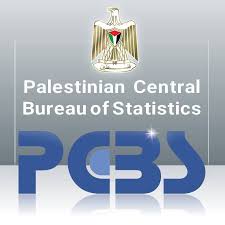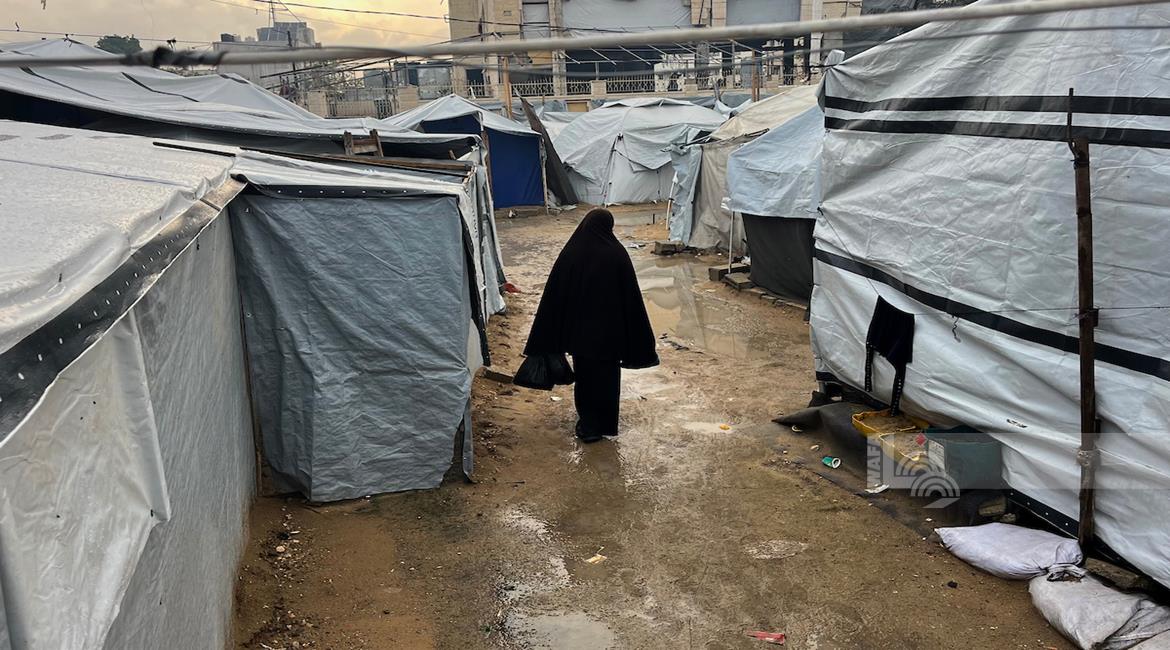RAMALLAH, Wednesday, August 16, 2023 (WAFA) - Informal employment constitutes more than half of the total workers in Palestine (excluding the agricultural sector) about 53% in 2022, where about 95% work in the informal sector, compared to 5% work in the formal sector, today said the Palestinian Central Bureau of Statistics (PCBS), adding that there has been no real change in the percentage of informal employment compared to 2008, which was about 54%.
It said that about 406,000 workers work in the informal sector inside Palestine and contribute about 22% of the GDP at a value of $3.7 billion. The number of workers is distributed as 185,000 workers in household projects in the informal sector, compared to 221,000 workers in unregistered establishments with contribution percentages of 7% and 15% of the GDP, respectively. On the other hand, the data showed a decrease in the contribution of household projects to the GDP, from 9% in 2008 to 7% in 2022.
The following is a demonstration of the key results of the Informal Sector Survey in Palestine:
The total number of Palestinian workers during 2022 was about 1.1 million workers (excluding the agricultural sector), where informal employment constituted about 53% of the total number of workers (558 thousand workers); about 5% of them work in the formal sector. The number of male workers in informal employment is 503,000 workers (56%) of the total number of male workers, compared to 55,000 females (32%) of the total number of female workers, which indicates a discrepancy in the percentages of informal employment between males and females.
As for the region level, results showed a convergence in the percentages of informal employment between the West Bank and Gaza Strip, where the number of workers in informal employment from the West Bank reached about 419,000 workers (53%) of the total workers from the West Bank, of whom about 29,000 workers are from Jerusalem governorate and about 128,000 workers working in Israel and Israeli settlements, compared to 139,000 workers from Gaza Strip (52%) of the total workers in Gaza Strip.
The total number of workers in informal employment and classified as employers or self-employed reached about 102,000 workers (18%) of the total informal employment; distributed as 88,000 males and 14,000 females while the highest percentage in informal employment was in wage employees at 77% (428,000 workers). Employed persons as unpaid family members are about 28,000 employed (5%) of the total informal employment.
At the level of various economic activities, informal employment was concentrated in construction activity, where this activity employs about 183,000 workers (33%), followed by the commerce, restaurants and hotels activity by 31% (176,000 workers), then mining, quarrying and manufacturing activities by 18% (102,000 workers). On the other hand, the services activity and the activity of transportation, storage and communication recorded the lowest percentage of informal employment of 12% and 6%, respectively.
At the level of occupations, about 178,000 workers (32%) of the total informal employment work in crafts, which include (builders and related occupations excluding electricians, workers in metal forming, machinery and related occupations, workers in traditional industries, printing and microdevices, workers in electrical and electronic occupations, workers in food processing, wooden crafts, clothing and garments and other related crafts and occupations), while the number of workers in elementary occupations reached 143,000 workers (26%), which include (cleaners and assistants, workers in agriculture, forestry and fisheries, workers in the fields of mining, construction, industry transportation, food preparation assistants, street vendors and workers in related services, and workers in other elementary occupation). About 127,000 workers work in services and market vendors (23%), while the lowest percentages of informal employment are among the occupations of technicians, specialists, assistant clerks, occupations of legislators, senior management, machine operators and assemblers.
The number of workers in informal employment with a secondary education certificate or less is about 458,000 workers (82%) of the total informal employment, while the number of workers with an intermediate diploma and above in informal employment reached about 100,000 workers (18%).
The number of household projects in the informal sector is about 104,000 projects, where females own more than one-fifth of these projects about 23,000 projects (22%) compared to 81,000 projects for males (78%). These projects employ more than 185,000 workers (160,000 male workers compared to 25,000 female workers). At the level of economic activities, the number of workers in industry and construction activities within household projects reached about 113,000 workers (61%) of the total workers in household projects, followed by transportation, storage, services, information and communication activities by 44,000 workers (24%), followed by domestic trade activities by 28,000 workers (15%). Data indicate that each household project in the construction and industry activities employs about 3 workers compared to the rest of the activities in household projects, with an average operating capacity of one worker per project.
The number of unpaid workers in household projects reached about 124,000 workers (67%) of the total number of workers in household projects compared to 61,000 paid workers (33%). On the other hand, unpaid female workers constituted about 92% of the total female workers in household projects compared to 63% of males. Paid workers concentrated in industrial and construction activities, as they constituted about 92% of the total paid workers in household projects.
The percentage of employers and self-employed workers among males in household projects with years of education of less than 9 years was 41% compared to 23% for females, while the percentage among males with years of education (10-12 years) was 40% compared to 33% for females. On the other hand, this percentage decreased among males with higher education (13 years and above) to reach 19% compared to an increase among females with a higher level of education to reach 44%.
The percentage of household projects in the informal sector, whose year of establishment was before 2000, was about 9%, and this percentage increased during the period 2000-2004 to reach 10%. Then, during the period 2010-2014, it reached about 17%, to increase after 2015 to exceed 56%. This means that more than half of the household projects have been established steadily during the last seven years.
About 84% of the household projects market their products in the same governorate or locality in which the household project is located, and about 11% of their products are marketed in the other governorates, and about 4% in the Palestinian occupied territories in 1948, while about 1% is exported abroad, where the number of household projects that market their products to be exported abroad reached about 2,200 projects (92% of which are electronic services that include programming services, website design, applications and advertisements, in addition to translation, writing reports and articles, montage for videos and e-marketing).
The total value added in household projects amounted to about $1.2 billion. Construction and industry activities accounted for 84% of the total value added of household projects, while the internal trade sector accounted for about 4%, followed by transportation, communications and services activity by 12%, and household projects contribution reached about 7% of the value of the GDP that is about $17 billion, excluding the agricultural sector, to exceed about 9% of the GDP, including the agricultural sector, and when compared with the formal sector, the results indicate that the worker’s share of the value added in the formal sector amounted to about USD 28,000 annually for each worker, while the share of the worker in household projects amounted to about USD 7000. On the other hand, the operating capacity of the formal sector establishments amounted to about 6 workers for each establishment in the formal sector, compared to 2 workers for each household project in the informal sector.
The number of workers was distributed by 185,000 workers in household projects in the informal sector, where more than one-fifth of these projects are owned by females, and these projects contribute about 7% of the GDP, equivalent to $1.2 billion, compared to 221,000 workers in the informal sector establishments, whose share in the GDP reached 15%, equivalent to $2.5 billion as a value-added in the said establishments. The results also showed a decrease in the contribution of the household projects to the GDP from 9% in 2008 to 7% in 2022, as the total number of employed in the household projects in 2008 was about 114,000 employed persons, compared to 185,000 workers in 2022. The total number of household projects in 2008 was about 70,000 projects reached to 104,000 projects in 2022.
M.K.












